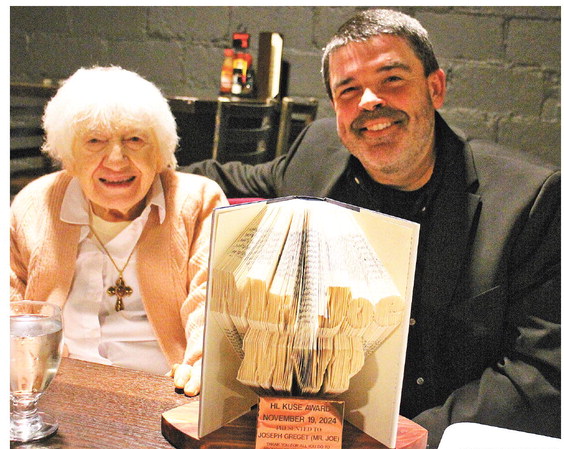County starts planning process, eyes committee overhaul


“The people wait to see what the county board screwed up next. They are making a joke out of it.”
Supervisor Rod Adams shared that feedback from residents of his district to other members of new county strategic planning committee at the group’s first meeting on June 8.
“I don’t like being a scapegoat,” he said, noting “They don’t want to run for office, but they are willing to criticize what we do.”
The special committee was formed in response to a resolution approved at the April 18 county board meeting calling for the reorganization of the county board to “commit to the development of goals through a strategic plan, restructuring and consolidations within the next 12 months.”
The resolution, which had been introduced by supervisor Lorie Floyd, had passed on an 11-6 vote. County board chairman Jim Metz appointed the committee naming Scott Mildbrand as chairman of it. Mildbrand had been one of the votes opposing the resolution at the county board session.
At last week’s meeting, Floyd explained the intent of the resolution was to improve county operations.
“I am seeing it is difficult for department heads to get stuff done,” she said, noting that the county board doesn’t have regular meetings and to get approval for actions there are layers of committees to go through. She also objected to the divide on the board between the members who are put on committees to handle difficult work and the newer members such as herself who are not involved in the decision making. “[We] have life and job experience. Don’t shove us off in the corner,” Floyd said.
She called on the county to look to its newer board members for new input and new ideas into things.
As far as the mechanics of the committee’s goals, she noted strategic planning could take a long time, but that committee consolidation could be done separately from that and be accomplished sooner.
“I don’t want to see this resolution sidelined because someone doesn’t think it is a good idea,” she said.
Floyd said she would like to see fewer, and larger committees which would oversee multiple departments. Currently, the county had a number of oversight committees which are for specific departments or areas. Floyd’s proposal is for the county to look at where those overlap and ways to consolidate in order to have fewer committees, noting those committee meetings may end up being longer as they deal with multiple topics.
Human Services Director Suzanne Stanfley raised concern about consolidation efforts, noting that her department has a number of committees whose membership is spelled out in state law. Other committees such as Veterans Service or Commission on Aging have members who are not county board members but who represent specific groups.
Floyd said she would like to see the end to what she said “is a dog and pony show for any department heads.” She gave the example of the emergency management director who was seeking to switch his position to 40 hours per week from 35 and how it had to go through committees with his oversight committee saying it needed to be decided at the finance and personnel committee.
Michelle Cahoon who heads the county’s public health department, noted that her predecessor would at times not even attempt to bring something forward, knowing that it would be voted down at the finance and personnel level. She said having fewer committees covering more topics would make more board members aware of what each department does.
“What is the intent?” asked extension agent Michelle Grimm of the committee consolidation suggestions. She explained that possible intents could be to save money, to allow board members to be more informed or to make it easier for department heads. “All of the above,” Floyd responded.
Grimm cautioned that it would be difficult to have consolidation of committees be the end all and be all.
“What is the harm to department heads of combining the committees? There is no negative to the department heads that I know of,” Floyd said, adding that she felt it was more efficient for one committee to handle multiple things. She gave the example of veterans service and the human service areas and suggested one committee could oversee both departments. “I am not asking that departments be combined,” she said.
“You have to look at the statutes that govern some of those committees,” Stanfley said.
Committee member Lester Lewis noted that there needed to be understanding that there were some committees that would not be able to be consolidated. “There are rules and statutes that have to be followed,” he said.
Lewis also cautioned that there are pitfalls with consolidating committees without increasing their membership, because it could mean some county board members are not on committees.
Floyd suggested rotating chairs of committees or having a process where every few years people come off one committee and are added to others to allow board members to be involved throughout the county.
County board chairman Jim Metz spoke out against that idea. He gave the example of when the human services department was in turmoil under a previous director and that he tapped board member Rollie Thums to chair the committee and get things on track. He noted that while he sometimes thinks Thums is barking up the wrong tree at times, he felt he was the best person to be the committee chair. He said it would not be right to take him off the job of being chairman of that committee just to rotate someone else into the position.
“They know their job, they have been on it a while and they save the county a lot of money,” Metz said defending his current committee chair appointments.
Strategic planning
The other major task laid out in the resolution and for the committee will be doing a strategic plan for the county government.
Strategic plans are documents which define the goals of the government, business or group who adopt them. They typically look out five to 10 years ahead and are used by decision makers when there are choices to be made. They are common in business and in governments and can be elaborate and detailed plans or, like the one under consideration at the Rib Lake school district be a single page.
The biggest challenge for the committee at last week’s meeting was how to begin and what level of community involvement or looking to see what other counties have done would be involved.
County finance director Larry Brandl noted that most planning processes take a year or longer to complete. He suggested the route to follow would be to have a management team of staff prepare a draft plan which would then be presented to the full county board with the board members building off from that draft plan.
“If you get too large of a group, it is tough to do,” he said.
Strategic planning is not a new concept for the county. Many departments have done them within their own departments and board members have experience doing them in both public and private sector organizations.
Lewis said the plans boil down to answering “What
See COUNTY on page 10
“I don’t want to see this resolution sidelined because someone doesn’t think it is a good idea”
— Supervisor Lorie Floyd do you want to do?” and “Who do you want to do it for?”
There was also disagreement about how much public involvement should be in the process.
“I don’t think it should be in the public forum until it is done,” Brandl said, suggesting the county staff develop a plan and then flesh it out at the board level.
Purely administrative staff meetings are generally not subject to the laws governing open meetings in Wisconsin and the public would not have the ability to attend those meetings.
Others on the committee wanted to reach out to the Wisconsin County’s Association or other counties who have recently completed strategic planning efforts.
Floyd gave the example that she would like to see more training of new board members as part of the county’s five year plan. She said there has been no formal training for her and others who are newer on the board.
Mildbrand said he took exception to Floyd’s comments viewing it as saying he was an ineffective county board supervisor because he did not go through any training when he was elected. “I have never gone to what I consider an indoctrination session with the WCA,” Mildbrand said.
Supervisor Sue Swiantek spoke up from the audience saying that as a newer board member it would have been helpful to have a little more mentorship with the senior member and said there should be training for board members.
“My mentors were Fred Parent, Joe Sweda, Al Beadles, Jim Metz, Chuck Zenner and George Southworth,” Mildbrand said. “The first day I walked into a finance committee I was so intimidated that I was afraid to say anything. He said that within a few months he felt more comfortable.
After lengthy discussion about how to begin, the suggestion was made to use SWOT analysis as a starting point. In this participants list the organization’s strengths, weaknesses, opportunities and threats (SWOT).
In this they would ask board members and staff to identify what they feel the county is doing well, what the county’s weaknesses are as well as looking at opportunities to improve and at potential outside threats.
The information will be collected through the county clerk’s office where staff will cross reference it to see if there are patterns and then bring it to the committee which will meet again toward the end of July.





